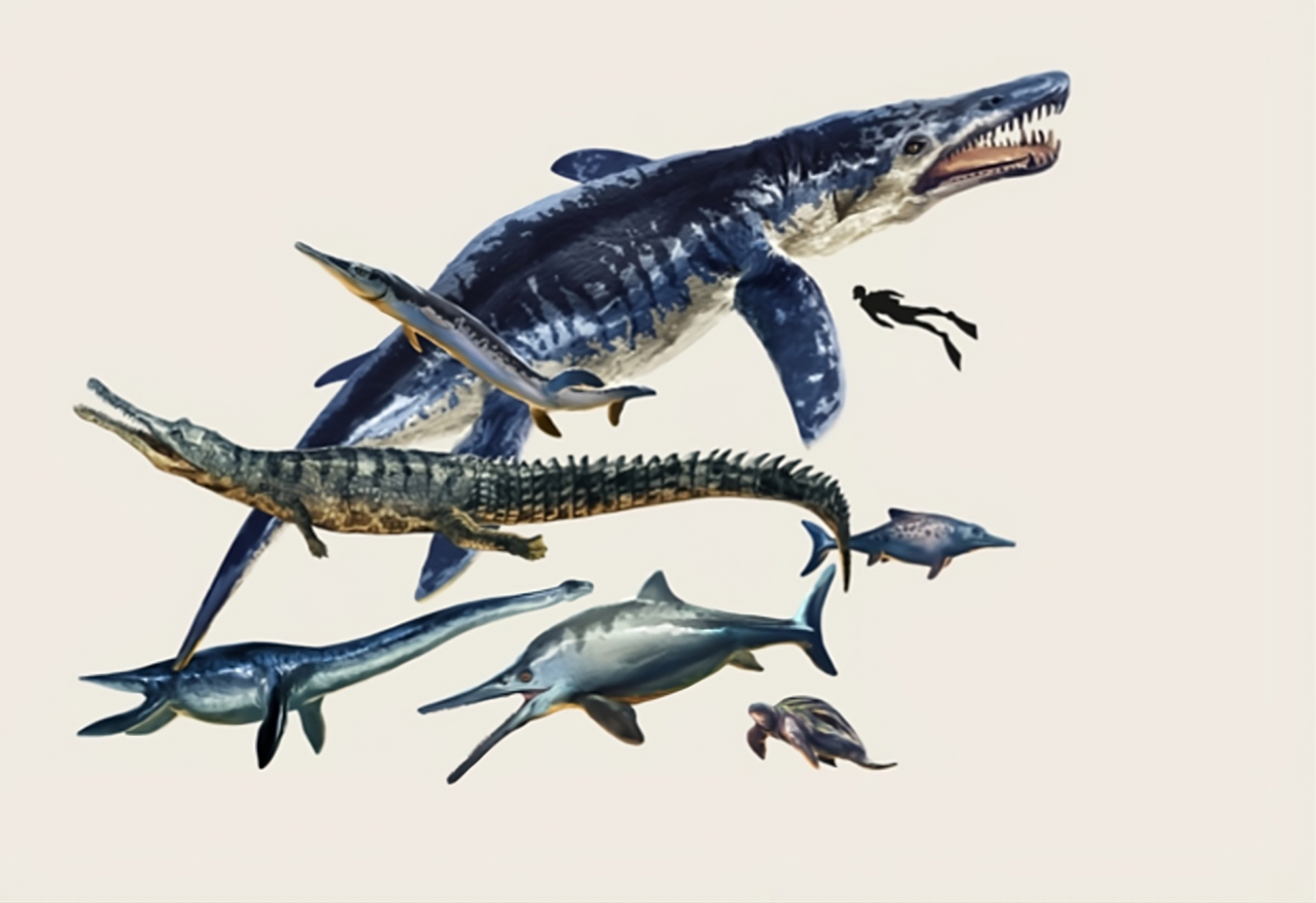Follow us on Google News (click on ☆)
The study, published in the Zoological Journal of the Linnean Society, reconstructs the ecosystem of the Paja Formation in Colombia and reveals that it was teeming with marine reptiles measuring over 10 meters (33 feet) and occupying a seventh trophic level.

Trophic levels correspond to the positions organisms occupy in a food chain based on their source of energy and nutrients. Essentially, they define the relationships between predators and prey in an ecosystem. Today, marine trophic levels number six, with the highest level containing species such as orcas and great white sharks.
The discovery of the existence of giant marine reptiles belonging to a seventh trophic level highlights the unparalleled diversity and complexity of the Paja Formation ecosystem and opens a new window into an arms race between predators and prey.
As part of their study, the McGill University research team reconstructed an ancient ecosystem from all the fossil animals found in the same geological formation in central Colombia. They built this network by considering the size of the animals, dietary adaptations, and prehistoric ancestors of animals existing today. The team also compared it to one of the most detailed current marine ecosystem networks, based on existing Caribbean ecosystems, which served as a reference.
The Mesozoic era, which includes the Cretaceous, was marked by rising sea levels and warmer climates, conditions conducive to an explosion of marine biodiversity. The Paja Formation ecosystem was teeming with plesiosaurs, ichthyosaurs, and invertebrates, giving rise to one of the most complex marine food chains in history.
"Our study is the first to examine these potential ecological interactions," explains Dirley Cortés, lead author and PhD student in the Department of Biology. "By understanding this complex network, we are better able to determine how ecosystems have evolved over time and shed light on the structures of current biodiversity."
"We have a better idea of how marine ecosystems formed—through intense trophic competition—and shaped the diversity we observe today," adds Hans Larsson, co-author of the study and professor in the Department of Biology.
For the team, the research is just beginning, as a food chain has been reconstructed for very few fossil ecosystems. It may be possible to make further comparisons with other eras and locations, thereby increasing our understanding of ancient marine life and its impacts on today's oceans.
The article "Top of the food chains: an ecological network of the marine Paja Formation biota from the Early Cretaceous of Colombia reveals the highest trophic levels ever estimated," by Dirley Cortés and Hans Larsson, was published in the Zoological Journal of the Linnean Society.
This study was funded by the McGill-STRI Neotropical Environments Option and the Natural Sciences and Engineering Research Council of Canada.